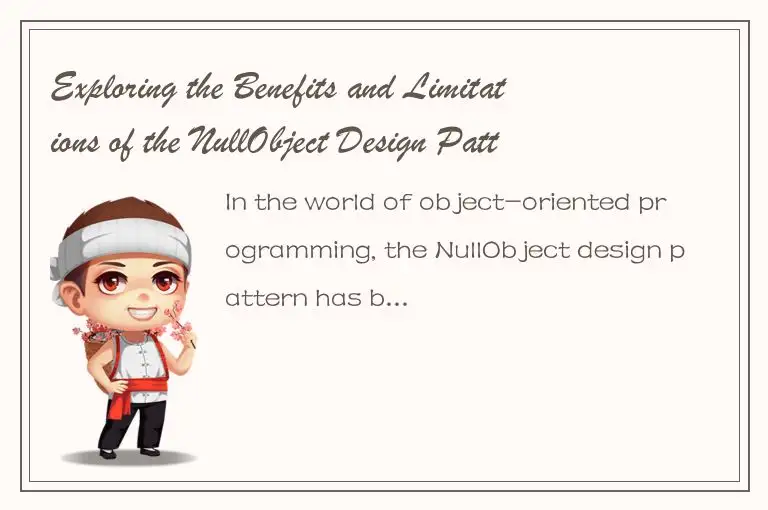In the world of object-oriented programming, the NullObject design pattern has become an increasingly popular tool for developers. The NullObject pattern can be especially useful in situations where objects may not always have a value, or where a default value needs to be set for those cases when an object is not present.

Exploring the benefits and limitations of the NullObject design pattern can provide insight into how this technique can be used to improve code quality, ease of maintenance, and overall functionality.
The Basics of the NullObject Design Pattern
The NullObject design pattern is considered a behavioral pattern that focuses on providing a default object when no object or value is present. This default object can be used in place of the missing object, allowing the program to continue running, rather than crashing or producing an error message due to a missing object or reference.
The NullObject pattern consists of creating a class that implements the same interface as the object it replaces but provides no behavior. When the program requires an object that can be null or non-existent, the NullObject is used to replace the missing object.
Benefits of the NullObject Design Pattern
One major benefit of the NullObject design pattern is the added stability it provides to programs. By providing a default object or value, the program can handle missing references or objects without crashing. This can improve user experience and make programming less frustrating for developers, as they can focus on other aspects of the program without worrying about unexpected errors or exceptions.
Another advantage of the NullObject pattern is that it can help with code organization and readability. By creating a separate class for the null object, developers can clearly see which areas may require special attention, and avoid confusing null references with actual object references. This improves code maintainability and makes it easier to understand and modify in the future.
The NullObject pattern can also be helpful in cases where performance is a concern. For example, if a program requires a default value for an object that is regularly used, having a null object can reduce the overhead of repeatedly checking for null values. This can lead to faster execution times and more efficient resource utilization.
Limitations of the NullObject Design Pattern
While the NullObject pattern can be useful in many cases, there are also some limitations to consider. For example, implementing the NullObject pattern in a complex system can require a significant amount of extra work. Developers must have a clear understanding of which objects require null values, and then create a separate class for each.
Another limitation is that the NullObject pattern may not always be appropriate for more complex objects with multiple references. In some cases, the null object may need to be replaced with a fully-functional object that contains real data. This can lead to more complicated code and potentially performance issues.
Additionally, the NullObject pattern can sometimes lead to confusion if not properly implemented. For example, if the NullObject is not fully implemented, it may still throw errors when used in place of an actual object, which could lead to unexpected consequences for the program.
Conclusion
Overall, the NullObject pattern is a useful tool for improving code stability, maintainability, and organization. By providing a default object or value when a real object cannot be found, programs can run more smoothly and with fewer unexpected exceptions.
However, it is important to understand the limitations of the NullObject pattern and consider its appropriateness for each specific case. With careful planning and implementation, the NullObject pattern can be a valuable asset for any object-oriented programming project.




 QQ客服专员
QQ客服专员 电话客服专员
电话客服专员